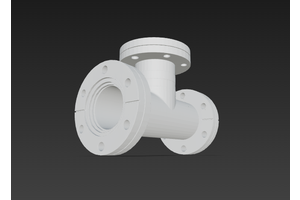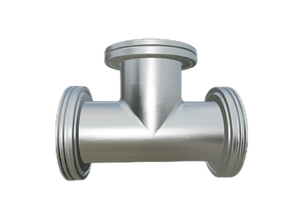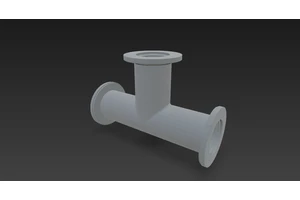Differences Among Three Common Types of Vacuum Flanges (CF, KF, ISO)
Understanding the Structural and Functional Distinctions of CF, KF, and ISO Vacuum Flanges
Section One: Conflat (CF) Flanges
• Definition and Application of CF Flanges: Metal-sealed flanges used in ultra-high vacuum applications, capable of withstanding high-temperature baking. • Key Specifications: Nominal diameters include DN16, 40, 63, 100, 160, 200, 250; vacuum capability up to 10⁻¹² mbar. • Materials and Standards: Sealing materials such as Viton, PTFE, oxygen-free copper; typically made of 304 or 316 stainless steel; compliant with GB/T 6070-2007 and GB/T 6071-2003 standards.
Section Two: ISO-KF Flanges
• Structure and Functionality of ISO-KF: Quick-release flanges composed of KF flanges, O-rings, centering sleeves, and clamps, allowing tool-free assembly and disassembly. • Size Range and Performance: Available in nominal diameters DN 10, 16, 25, 40, 50; vacuum capability up to 10⁻⁸ mbar. • Materials and Compliance: Sealing materials include Viton, Buna, Silicone, EPDM, aluminum; typically constructed from 304 or 316 stainless steel; adheres to DIN 28403 and ISO 2861 standards.
Section Three: ISO Flanges - ISO-K and ISO-F
• Overview of ISO Flanges: Suitable for applications ranging from atmospheric pressure to high vacuum, available in larger diameters starting from DN 63. • ISO-K Configuration: Composed of flange, clamp, O-ring, and centering ring, designed for frequent assembly and disassembly. • ISO-F Configuration: Similar to ISO-K but secured with bolts instead of clamps, providing a more robust connection for larger systems. • Technical Details: Available in sizes DN 63 to DN 630; compatible with Viton, Buna, Silicone, EPDM, and aluminum seals; capable of withstanding 150°C baking when using fluororubber O-rings; complies with DIN 28404 and ISO 1609 standards.





